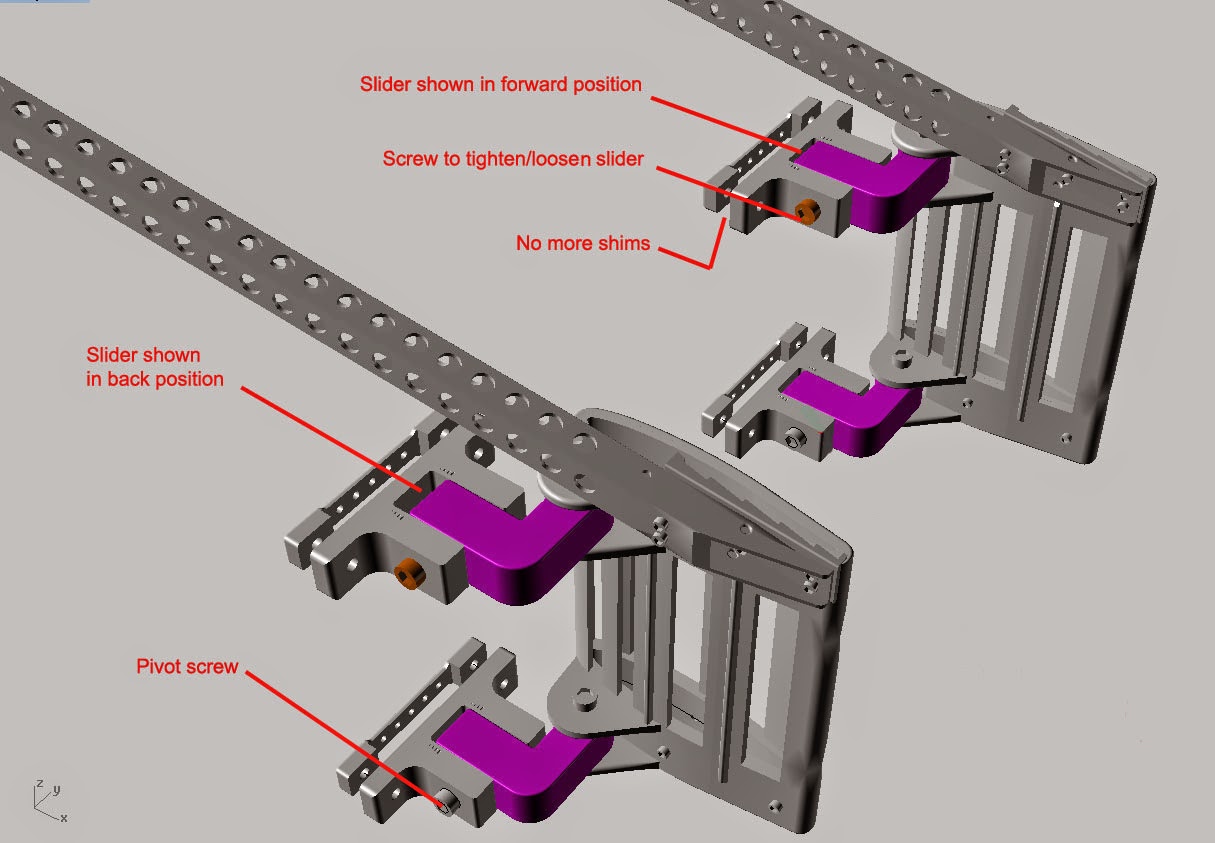 |
| Glenn Ashby balancing nicely on J foils and Paradox rudders. Photo by Rhenny Fermor of www.sailingshots.com.au |
Steering system
The new kinetic techniques used to promote early flight, combined with much higher top speeds, really put our cassette and gudgeon fittings to the test.
When foiling high, immersed rudder area is much smaller but, since speeds are higher, the equilibrium sideforce generated by the rudder is the same. Dynamic forces are bigger.
Because these forces are exerted at a greater distance from the hull (further down), the moments on the cassette assembly, gudgeons and transom are considerably greater than previously measured.
When retrofitted to the transoms of existing boats, some reinforcement may be required to create a stiff connection between gudgeons and hull. This can be done internally or externally.
Applying extra carbon reinforcement internally is ideal. But simply bonding on some carbon plate to the outer skin of the transom is an easy and quick solution.
Care must be taken that any external bonded-on reinforcement remains within the hull overall length limit. If this is exceeded then some material must be sanded off the bows.
Some filling of the core may be needed in way of the gudgeon fastening bolts if the area around the new bolt positions is not already ‘cored out’ with carbon or filler.
| External transom ‘C-plate’ reinforcement. Plus stiffening added to sideplates. |
Initial observations were that our cassettes were too flexible when subjected to the higher loads. They were not in danger of failing but their flexibility impinged on the ‘crispness’ of the feel/feedback through the tiller extension when flying fast.
It should be noted that these cassettes evolved through our in-house testing on Paradox platforms fitted with our more stable foil setups. The inherent stability of our foiling geometries did not require the aggressive inputs needed to correct unstable configurations. Therefore we progressively reduced the gauge of the sideplates connecting the top and bottom machined ‘stocks’ that hold the rudders and swivel pins. The earlier versions (round holes) had thicker sideplates than the later (triangular holes) design.
Since the flex was in the sideplates only (the machined stocks are robust and fit the rudders snugly) it was easy to reinforce them by adding carbon plate or box section to the sides of the cassettes.
|
Latest cassettes developed on stable Paradox platform had very thin gauge sideplates.
These were flexing on other boats when steering aggressively to stay ‘on top of’ unstable foils.
|
The production cassettes have been revised to incorporate stiffening ribs in the sideplates.
Aluminium remains the better material choice for production when weight and cost are considered together.
Aside from stiffness, strength seemed adequate. None had broken after the equivalent of three seasons on our various prototypes.
The more surprising failure we had at the Worlds was shearing of the rod ends (off-the-shelf spherical bearings) connecting the gudgeons to the cassettes. We had been warned early on by experienced Moth sailors about the possibility of fatigue failure in these components when they are loaded cyclically in bending over long periods of time. Therefore we inspected them often and monitored the hours each unit had sailed so that if and when one failed, we could know the expected fatigue life.
It seemed the parts (8mm SS) were conservatively over specified.
Even so we replaced them before the regatta.
| Brittle failure of 8mm SS rod end fitting. |
In our application the fittings are loaded almost exclusively in sheer, with bending moment minimised: They are not used to adjust the steering geometry so they are always wound all the way into the gudgeons.
The rod ends that broke (one in practice and one during a race) exhibited brittle failure with no sign of fatigue.
The instantaneous load simply exceeded the strength of the part.
We have since sourced a higher-spec equivalent rod end made with a forged/rolled process using a stronger steel.
These were used for the remainder of the series and held up well.
Looking at failures of rudder fittings on other designs (and there were a few), especially on boats where conventional gudgeons were adapted to take some vertical lift, it is obvious that the engineering has to take into account much greater moments. The transoms and fittings must now be engineered accordingly.
As always the learning curve is absorbing and the weakest link is constantly exposed as it is chased around the system. Fascinating times!
Applied
Here is the updated design to emerge from the experience.
More details later but, as you can see, the spherical bearings have been replaced in favour of machined sliders. Existing systems can be updated with higher spec rod ends or swapped for the new system as mounting hole spacings and rudder housings are compatible.
